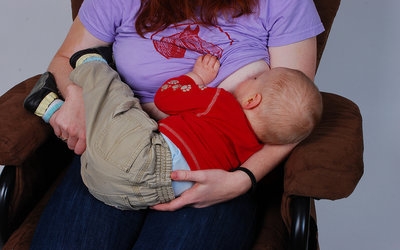Breastfeeding Basics: 5 Tips to Getting Your Baby Started
Breastfeeding is the most natural way for a mother to bond with her newborn baby. Because breastfeeding is a natural bonding method, it doesn’t take long for both mother and baby to develop a daily feeding routine.
If you are a new mother and this is your first time breastfeeding, then prepare for the many benefits both you and your baby will experience. One of the benefits is health.
According to the U.S. Department of Human Services’ Office on Women’s Health (OWH), breast milk carries the nutrients and antibodies that protects your baby’s body. Breast milk also reduces your baby’s risk of asthma, respiratory infections, Type 2 diabetes, ear infections and diarrhea, all common illnesses experienced by formula-fed babies.
As for mothers, the OWH has found that breastfeeding reduces a woman’s risk of breast cancer, ovarian cancer, Type 2 diabetes, and postpartum depression.
How to breastfeed
1. Get into a comfortable position. If there’s one thing you don’t want to do, it’s stress out while your feeding your baby. So, relax; sit back or lie back. Find the position that best works for you. In whatever position is comfortable for you, it’s important that your back is supported. Place a breast feeding pillow or cushions near you to help you and your baby feel comfortable.
2. Getting your baby into position. Put your baby’s hands at his side. Tilt your baby’s head back (if he’s not already lying on a breast-feeding pillow). You can do this by cradling his head with your hand or holding him by his shoulders with your palm and having your thumb and index finger behind his ears.
3. Preparing to latch. Bring your baby to your breast. With his lips on your nipple, your baby should respond by opening his mouth. His chin and bottom lip should touch your breast. Guide his bottom lip away from the base of your nipple so that he can draw in as much of your breast as possible.
4. Latching on. When your nipple lands in the back of your baby’s mouth, your baby will work his tongue under your breast to activate the milk ducts. Once the milk begins to flow, keep your breast as still as possible.
5. Baby knows when to stop. When your baby’s jaws start slowing down and eventually stop moving, that’s a sure sign that he has had enough milk. When he’s done, lift your breast and your baby should let go, if he has not done so already.
When first learning how to breastfeed, you may have to make adjustments during the process to make sure that your baby has latched on correctly and is getting the amount of milk he needs.
If you need more help in breastfeeding, feel free to ask for help. Contact your doctor’s office or a midwife center in your area.
Mother of four, writer Melanie Fleury has breastfed all her children for various amounts of time. She found that, for her, the key to breastfeeding was to get into a comfortable position before latching her baby on. A good breast feeding pillow was often the key to getting that proper positioning.
Photo Credit: http://www.flickr.com/photos/motheringtouch/5204672889/


Comments are closed.